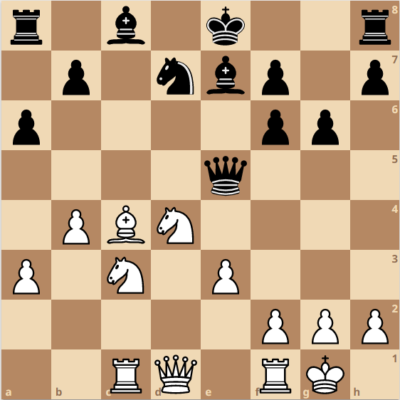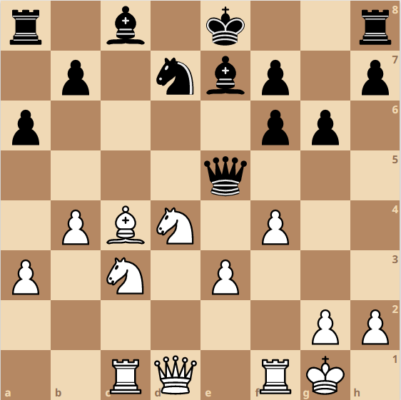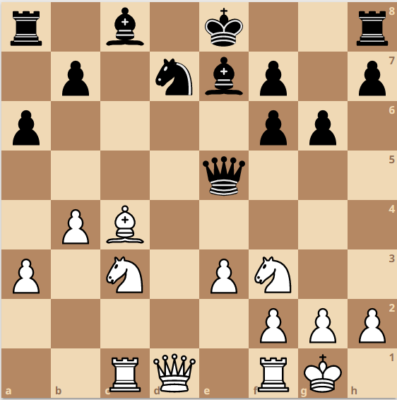If you ever observe chess grandmasters while they are playing a match, you will notice certain similarities among all of their behaviors. You will find them gazing into nothingness as if lost in some deep thought or focusing on the game with their hands covering their face in a way that focuses their vision only on the chess board.
If you carefully observe their eyes, you can see them moving swiftly across squares, and also identify key squares. What do you think are they doing? Yes, you guessed it right, they are calculating the possibilities which will help them decide their move.
Calculation in chess is by far the most critical and complex process that a chess player must learn. Starting from as simple as 1-2 moves, to thinking as deep as 10-12 moves, depending on the complexity of the position, calculating variations with clarity is a valuable skill that every chess player who hopes to get better at the game must possess.
I’m sure two very important questions must have now come to your mind – why is calculation so important and how does one learn to calculate in chess?
Well, continue reading this article about one of the most important skills of chess players.
Why is calculation important in chess?
Imagine a situation where you have to take a very important decision that can either bring you profit or bring you loss. You directly decide a way to move ahead without giving it due thought or considering the various possibilities. Sounds risky and absurd right?
Calculation works more or less in the same way when it comes to chess. It helps a player get clarity with respect to the various options at hand, evaluate each one of them with objectivity, check if and how they could be of benefit, and only then make a decision about which move to play.
As you progress further in chess, you will come across more formidable opponents. This will require you to calculate with enhanced precision as even a slight error can significantly affect the course of the game. Along with the accuracy, the depth of each calculated variation increases along with your level too. Not only do you have to make sure that the end position which you’re visualizing is correct but also that the intermediate moves in the variation are equally solid and foolproof.
Sounds tough, right? But, what if I tell you that with the right way of practicing and improving your calculative power, it is not all that difficult.
How To Calculate In Chess
Every player has their own specific way in which they approach calculation. However, there are some basic methods that are followed by more or less everyone. One such method that your author religiously follows and will even suggest to you is the ‘candidate moves’ method.
In this, firstly, you assess the position and understand what you can achieve objectively. Then, you decide on candidate moves for yourself. Candidate moves are those moves that help you narrow down to the best available possibilities in a given position. They help you filter out inconsequential moves and enable you to focus on those two to three possibilities that might yield your desired goal.
Once you have finalized the candidate moves, you start calculating moves further as variations for each of these candidate moves. The depth of your calculation depends on the complexity of the position and also your chess level. But calculating at least two to four moves ahead is a great start.
Let’s understand this method better with an example. The following game was played between Petrosian and Kortchnoi in Curacao, in 1962.

Firstly, we begin by assessing the position. Upon evaluation, you can understand that White is better, primarily due to factors such as the completion of development and Black’s king still remaining uncastled. So, as White, it will be objective to set a goal of achieving a tangible advantage in this position.
Now that our goal is set, we start determining candidate moves that help us exploit our opponent’s prime weakness – the king in the centre. If Black gets to castle, then Black’s position might become slightly more solid. Hence, we have to make tempo-gaining moves in order to gain an advantage. However, even if Black castles unavoidably, we must strive to have a superior position in that case.
Keeping this in mind, two moves, namely 1.Nf3 and 1.f4 are good candidate moves here.
Let’s first calculate 1. Nf3.


We have to calculate only the best moves for our opponent, so the two natural alternatives for Black in this position would be 1…Qd6 or 1…Qb8. Considering 1…Qc7 is a bit dangerous as the White rook on c1 is already threatening the Queen indirectly.
After 1…Qd6, 2. Qb3 attacking the f7 pawn. Remember to not exchange pieces especially when your opponent has a cramped position or is lagging in development. 2…0-0 3. Rfd1 Qb8 4.Nd5 Bd6 and though this position is still better for White, Black is somehow holding it together.
After 1…Qb8, 2. Nd5 maintains the tension on the e7 bishop to prevent Black from castling for at least one more move. 2…Bd8 (2…Bd6 3. Qd4 attacking the f6 pawn) 3. Qd4 0-0 4. Rfd1 Ne5 and though again this position is better for White, Black tries to exchange some pieces and gain some liberty of movement.
Though 1. Nf3 yields a satisfactory outcome, we must examine whether 1. f4 can bring us something better.

The very first thought after 1.f4 will be, “but what if Qxe3?”. However, White can simply play Kh1 with the idea of Re1 creating a lot of problems for Black.
Black’s two primary alternatives are 1…Qd6 and 1…Qb8 yet again.
After 1…Qd6, White can continue with 2. Qb3 attacking the f7 pawn. 2…0-0 3.Rfd1 threatening an attack on the queen. 3… Qb8 4. a4 and White has a very commanding position which stops all of Black’s possibilities such as b5 or Ne5. Evidently, Black is in big trouble.
After 1…Qb8 comes the most crucial position. If we are able to find a strong variation within this candidate move, 1.f4 will help us get an undoubtedly winning position. Black’s pieces are pushed completely behind and White’s pieces are ready for an attack so 2.Bxf7 is a movie that needs to be considered thoroughly. 2…Kxf7.
3. Qb3+ Ke8 (only move avoiding checks) 4. Nd5 threatening Nc7+ 4… Bd6 5. Ne6 and White is simply crushing. Black is completely tied down and all of White’s pieces are ready to unleash total destruction.
Hence, 1.f4 is definitely the way forward in the position.
I hope this example was an instructive one that helped you understand how you can assess and calculate variations in any situation.
Conclusion
As discussed in this article, calculation in chess is absolutely important. Improving your imaginative power and calculating variations with clarity and depth is a great way to ascertain growth in your chess understanding.
Learning how to solve solve puzzles in addition to analyzing classic games of renowned players and solving studies are some ways in which you can improve your calculative power. You must remember that accuracy is as important in this process as the number of moves you can think ahead. Hence, start slow and steady if you like but prioritize accuracy as much as you prioritize depth of calculation.


